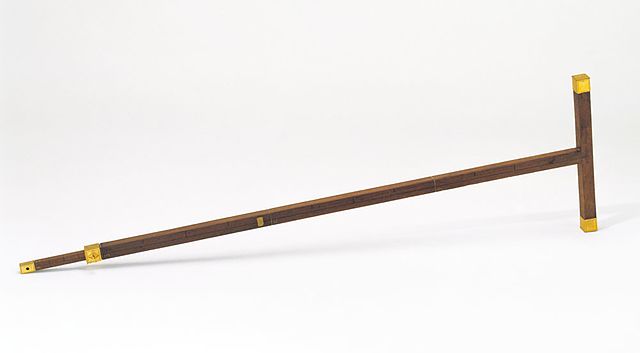Reflecting instruments are those that use mirrors to enhance their ability to make measurements. In particular, the use of mirrors permits one to observe two objects simultaneously while measuring the angular distance between the objects. While reflecting instruments are used in many professions, they are primarily associated with celestial navigation as the need to solve navigation problems, in particular the problem of the longitude, was the primary motivation in their development.
Representative drawing of Robert Hooke's reflecting instrument. It does not accurately depict the fine details of the instrument but rather the basic functionality. The index with telescope mounted is shown in black, the radius arm with the mirror (grey) attached in blue and the chord in green on white. The lines of sight are represented by the red dashed line.
Borda's reflecting circle, on display at Toulon naval museum
Mendoça's reflecting circle on display at the Musée national de la Marine.
The term Jacob's staff is used to refer to several things, also known as cross-staff, a ballastella, a fore-staff, a ballestilla, or a balestilha. In its most basic form, a Jacob's staff is a stick or pole with length markings; most staffs are much more complicated than that, and usually contain a number of measurement and stabilization features. The two most frequent uses are:in astronomy and navigation for a simple device to measure angles, later replaced by the more precise sextants;
in surveying for a vertical rod that penetrates or sits on the ground and supports a compass or other instrument.
Jacob's staff in the Museo Galileo, Florence
Nautical cross-staff dated 1776, on display at Musée national de la Marine, Paris.





